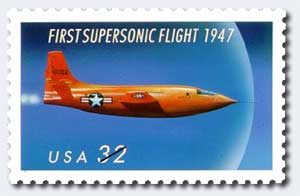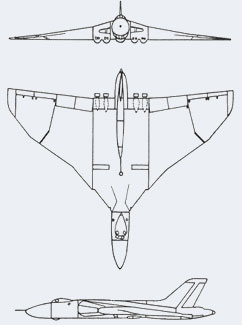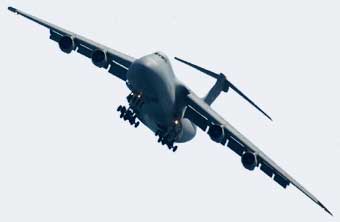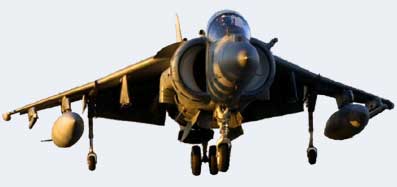
The
Hawker-Siddeley Harrier and the
AV-8A are the first generation of the
Harrier series, a revolutionary close-support and reconnaissance fighter aircraft with unique V/STOL capabilities. The family is part of a large family of experimental versions and service aircraft, including the much modernized
Harrier II.
The Harrier family was started with the
Hawker P.1127. Design began in 1957 by Sir Sidney Camm, Ralph Hooper of Hawker Aviation and Stanley Hooker of the Bristol Engine Company. Rather than using rotors or a direct jet thrust the
P.1127 had an innovative vectored thrust turbofan engine and the first vertical take-off was on October 21, 1960. Six prototypes were built in total, one of which was lost at an air display.
An order for 60 aircraft was received from the RAF in 1966, and the first pre-production
Harriers were flying by mid-1967.

The
Harrier GR Mk.1 was the first production model taken from the
Kestrel, it first flew on December 28, 1967, and entered service with the RAF on April 1, 1969. The ski-jump technique for STOL use by
Harriers launched from Royal Navy aircraft carriers was tested at the Royal Navy's airfield at Yeovilton, Somerset. Their flight decks were designed with an upward curve to the bow following the successful conclusion of those tests. The air combat technique of vectoring in forward flight, or viffing, was evolved in the
Harrier to outmaneuver a hostile aircraft or other inbound weapon.

The
Harrier GR.3 featured improved sensors, countermeasures and a further uprated Pegasus Mk 103 and was to be the ultimate development of the 1st generation
Harrier. This model saw extended service in the Falklands War.
The
Harrier has two control elements that a fixed wing aircraft does not normally have. These are the thrust vector and reaction control. The thrust vector is the angle of the four engine nozzles and can be set between zero degrees (horizontal, pointing straight back) and 98 degrees (pointing slightly forwards). The 90 degree position is generally used for VTOL manouvring. Thrust vector is adjusted by a control similar to and beside the thrust lever. The reaction control is achieved by manipulating the control stick and is similar in action to the cyclic control of a helicopter. While irrelevant during forward flight mode, these controls are critical during VTOL and STOL, and are used together during these manouvres. Wind direction and the orientation of the aircraft to this is also critically-important during VTOL manouvres (in this sense operation is limited compared with a helicopter, which can take off and land in side winds). The Harrier's landing gear configuration also complicates normal landing; it is necessary to ensure that the wing-mounted stabiliser struts contact the runway simultaneously; bounce or skew to one side can result if this is not achieved.
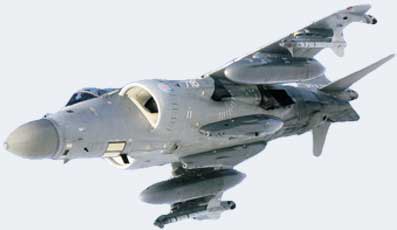
The
Sea Harrier, which is based on the
GR3, was important in the British victory in the Falklands War. Twenty
Sea Harriers were operated from the carriers HMS Hermes and Invincible mainly for fleet air defence. Although they destroyed 23 Argentine aircraft in air combat (in part due to using the American-supplied latest variant of the Sidewinder missile and the Argentine aircraft operating at extreme range) they couldn't establish complete air superiority and prevent Argentine attacks during day or night nor stop the daily flights of C-130 Hercules transports to the islands.
The
Harrier GR.3, operated by the RAF, also saw combat during the Falklands War. They operated from Hermes and provided close support to the ground forces and attacked Argentine positions but were unable to destroy the Port Stanley runway.
The
Sea Harrier, modified to
FRS2, saw combat during the Bosnia conflict, with one aircraft being shot down by Serbian defences in 1994. During the Kosovo War, combat patrols were flown, but no weapons were fired. The
Sea Harrier patrolled over Iraq during the 12 years of enforcing no-fly zones.

The
AV-8B is an extensively redesigned aircraft with a new composite wing, new cockpit and avionics (e.g., FLIR and new bombing system), and more powerful engine. The new wing enables higher take-off weights and more ordnance. The payload was nearly double and the range much increased over the older design, one of the chief complaints with the older type. It was focused primarily on close-air support, and all the added capabilities came at the cost of about 50 mph (80 km/h) slower speed. The
AV-8B was put into service in January 1985 at a cost of US$21.6 million each. The design was further developed into later types with high-speed, that placed less focus on payload and range.
In the 2003 invasion of Iraq,
Harrier II versions saw extensive usage by both the USMC and RAF. USMC
Harriers were based on two USMC amphibious assault ships, USS Bataan (LHD-5) and USS Bonhomme Richard (LHD-6). Each carried 24
Harriers, about four times their normal complement of fixed-wing aircraft, and tried out the long dormant secondary purpose of the LHDs and LHAs, that of a small aircraft carrier, or sea control ship. RAF
Harriers were shore-based in Kuwait.

The current
AV-8B Remanufacture Program converts older
AV-8B day attack aircraft to the most recent production radar/night attack configuration. This radar-equipped version of the
AV-8B, called the
AV-8B II+, became operational in the summer of 1994. The
AV-8B II+ uses the same AN/APG-65 radar system as the F/A-18 Hornet and is able to carry AIM-120 AMRAAM missiles, giving the aircraft a considerable increase in anti-aircraft capabilities. However, these missiles are most likely to be deployed as a means of self-defense or airbase defense instead of air superiority, because despite its agility, the
Harrier is subsonic and therefore slower than most fighters.
Operators :
India, Italy, Spain, Thailand, United Kingdom (Royal Air Force, Royal Navy), United States (Marine Corps).
 Specifications (Harrier GR.1)
Specifications (Harrier GR.1)
General characteristics
Crew: One
Length: 45 ft 7 in (13.90 m)
Wingspan: 25 ft 3 in (7.70 m)
Height: 11 ft 4 in (3.45 m)
Empty weight: 12,190 lb (5,530 kg)
Loaded weight: 17,260 lb (7,830 kg)
Maximum gross takeoff weight: 25,350 lb (11,500 kg)
Powerplant:1× Rolls-Royce Pegasus 101 turbofan with four swivelling nozzles and four 'puffer jets' in the nose, the wing tips, and one (steerable) on the tail.
Performance:Maximum speed: 735 mph (1,185 km/h)
Service ceiling: 49,200 ft (15,000 m)
Thrust/weight: 1.10:1
Armament:
2x 30 mm Aden cannon pods under the fuselage
A variety of bombs, reconnaissance pods, AS-37 Martel or AIM-9D guided missiles on five hardpoints.
Links:
RAFhttp://www.harrier.org.uk/welcome/index.htmAV-8B HarrierVideo:
Harrier(Adapted from
http://www.wikipedia.org/)
 Read more...
Read more... Read more...
Read more... Read more...
Read more... Read more...
Read more... Read more...
Read more... Read more...
Read more... Read more...
Read more...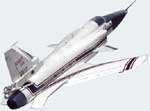 Read more...
Read more... Read more...
Read more... Read more...
Read more...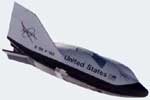 Read more...
Read more... Read more...
Read more...